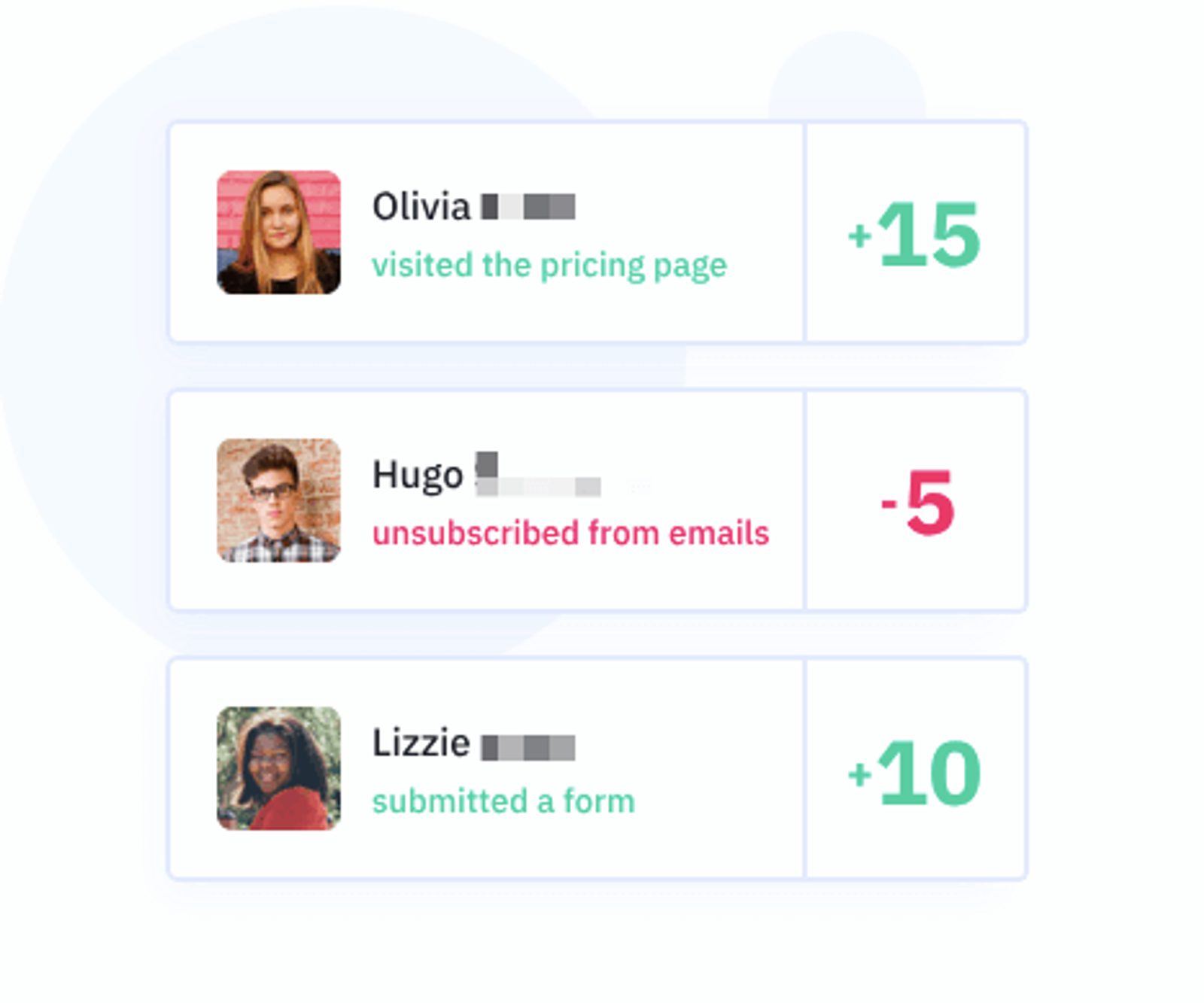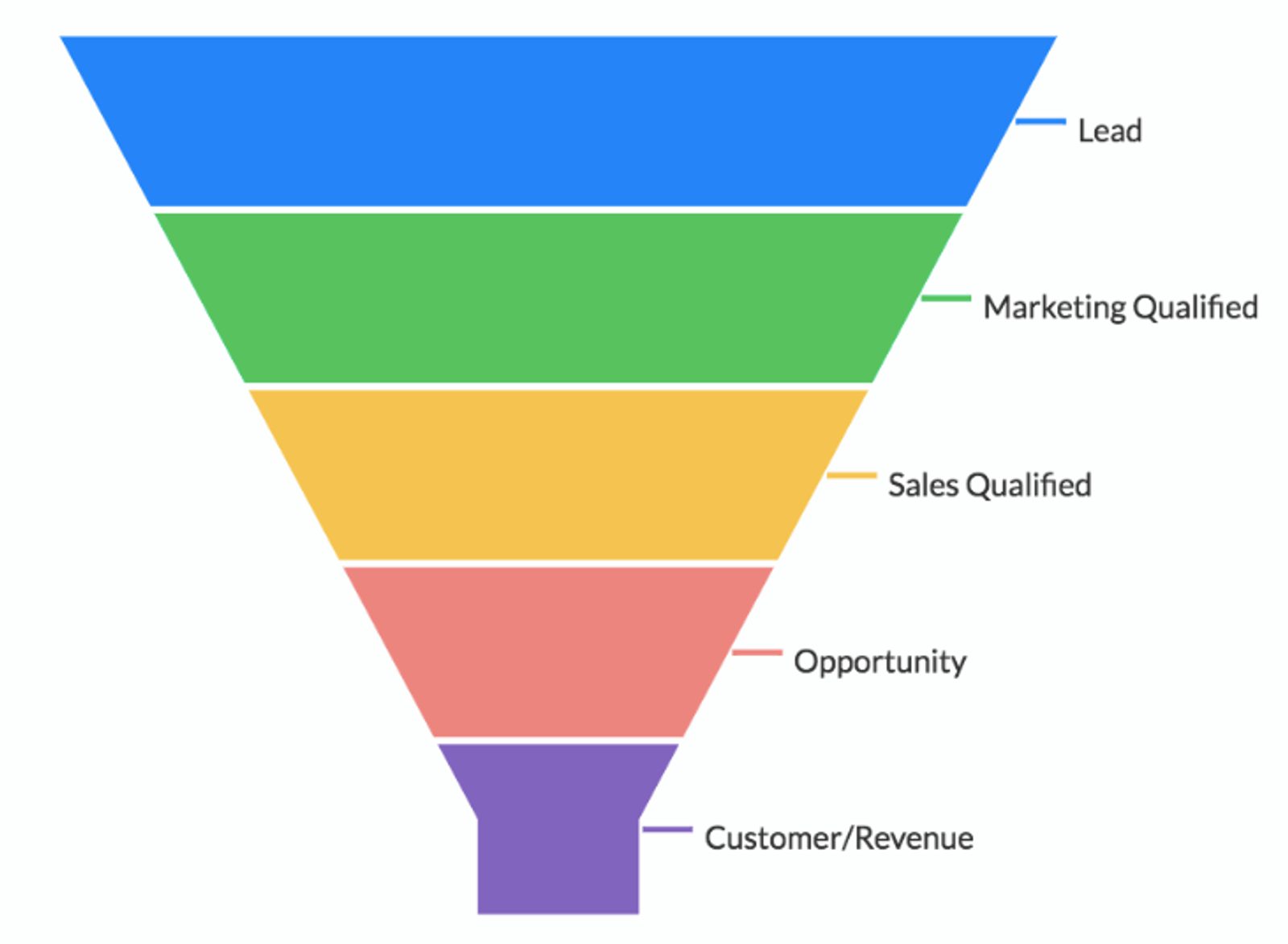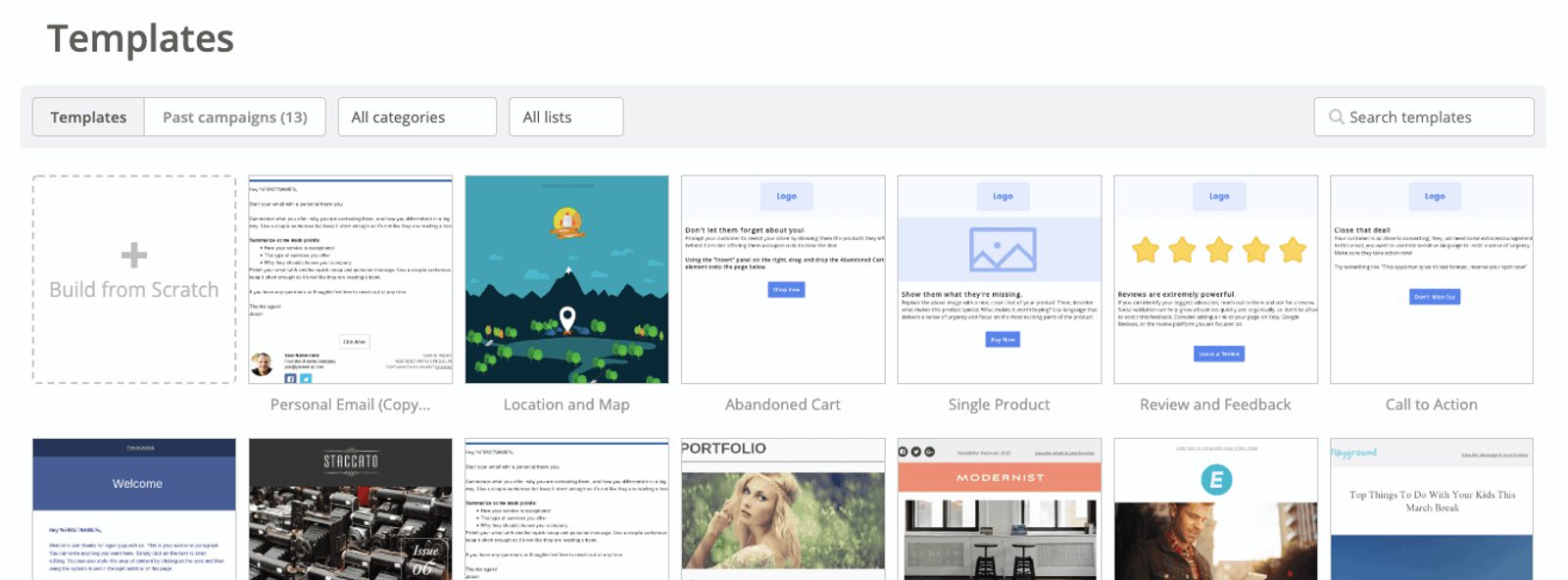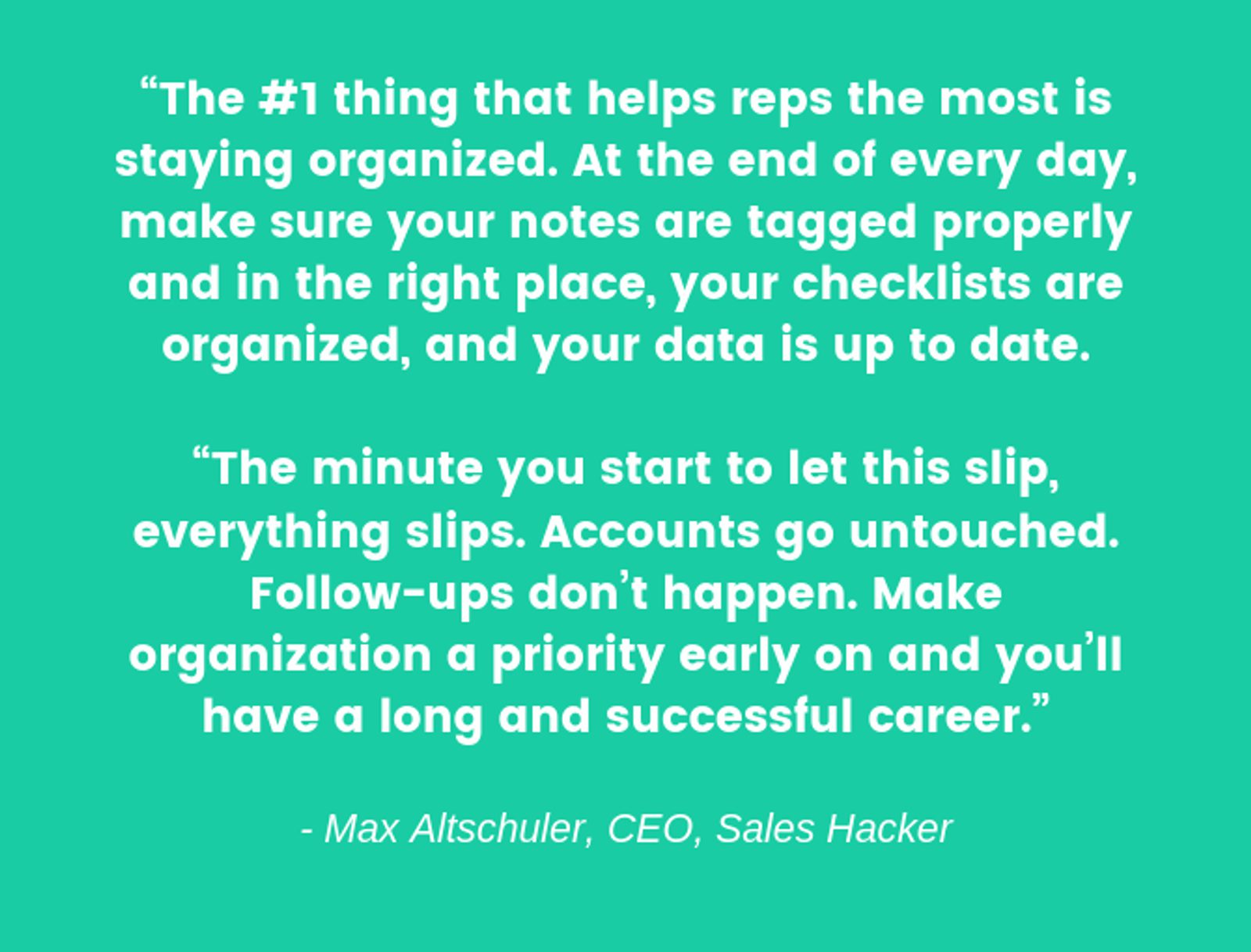- Prospecting sales opportunities
- Asking the right questions
- Getting responses
- Rejection
- Balancing sales tasks with administrative stuff that still has to get done
- And, ya know, making sales
How to keep your sales organized: Top 9 tips for sales reps

How can you keep NINETY-FOUR separate sales tasks organized if you don’t have a system to do it?
You can’t. Here are the top 9 tips for how to keep your sales organized.
- Define sales team roles and responsibilities
- Make sure your leads are qualified
- Nurture your leads right away
- Set a good first contact and follow-up frequency
- Automate as many tasks as you can
- Create email templates and sales scripts
- Measure everything you do
- Make a daily to-do list, and block out your time
- Take time at the end of your day to review your progress
1. Define sales team roles and responsibilities
What does a sales team look like?
These are the three most common sales roles:
- Sales development representatives (or SDRs) and business development representatives (or BDRs)
- Account executives
- Sales managers
Your business size and goals will determine what your sales team looks like, but one thing needs to happen whether your team is 1 person or 100 people...
...define each role’s responsibilities.
An SDR or BDR is in charge of inbound leads, prospecting outbound leads and lead generation. They…
- Prospect new leads
- Start talking to new leads that arrive via channels like forms and social media
- Identify problems for new leads that they can solve
- Qualify new leads and move them through the pipeline
- Deliver qualified leads to account executives to close the deal
An account executive…
- Continues to guide a qualified lead through your pipeline
- Sells products or services to convert leads into paying customers
A sales manager oversees the sales staff and keeps everything running smoothly. They…
- Help set team goals
- Keep track of key sales metrics
- Motivate and coach their sales staff
Why is it important to define each role? Can’t all of sales just take a pile of leads and magically make them customers?
No. That would be chaos.
Without organizing who is in charge of what for your sales goals, people will wind up doing things twice, or letting leads slip through the cracks. And none of that will help you get more customers.
2. Make sure your leads are qualified
What is lead qualification?
Lead qualification is the process of deciding whether a sales prospect is a good candidate to become a customer.
It’s no secret that qualifying leads is important. It keeps you from wasting time talking to people that will just flat-out never buy from you. When you take the time to really get to know your marketing qualified leads (MQL) and sales qualified leads (SQL), you will see many more won opportunities at the end of the lead funnel.
An optimized leads qualification process serves two main functions:
- To predict whether or not a lead is worth the time and effort
- To help reps tailor the lead nurturing process for maximum success
Now, how do you actually do that? How do you qualify leads?
*Chirping crickets*
The first step to qualifying a sales lead is to create a lead score based on their engagement with your website, emails, and social media posts.
Lead scoring is one of the best ways to verify that a contact will be worth talking to. All it means is assigning a point value to different lead behaviors, like:
- Visiting a website
- Opening an email
- Unsubscribing from email
- Having a phone call
- Scheduling a demo
Although lead scores will be assigned uniquely across companies, here’s an idea of how it works.

Lead scores for various actions will determine what stage a lead is in through the sales pipeline.
The second step is to make a discovery call.
A discovery call should either clearly show a sales opportunity or definitively disqualify a prospect. You need to ask questions that help you learn what your prospect’s needs are and what you can do to solve them.
According to Gong, asking 15-18 questions during your discovery call is only marginally more effective than asking 7-10. Aiming for 11-14 is better. When you are coming up with these questions, remember to be a CHAMP.
CHAMP is a lead qualifying process that asks the more important questions first for both the lead and the sales rep.
- Challenges: What problem needs solving in your business? What challenges do you still have that your current service still doesn’t fix?
- Authority: Who are all the people involved in this purchasing decision?
- Money: What are your budget expectations to comfortably make a buying decision?
- Prioritization: When do you plan to make a decision about this service to solve your problem? Are you looking at any other possible solutions?
The order of these questions follows a more natural path of conversation through the lead funnel.

The lifecycle of a lead goes through marketing and sales before converting. (Source: Business2Community)
After the discovery call, you can add more specific marketing and sales questions of your own throughout the process to better qualify leads more specifically for your business.
3. Nurture your leads right away
Have you ever walked into a store and been immediately ambushed by a salesperson?
It’s not fun. But a quicker response time can be beneficial. You can…
- Find what you’re looking for more quickly
- Ask questions about what you’re looking for
- Learn about an alternative product that might be even better for your needs
An estimated 90 percent of leads are never acted upon. This is typically because…
- The lead is sent to the wrong person (and it never gets passed to the right person)
- The lead isn't ready to talk to a sales rep yet
How long should you wait to try and get those fresh-through-the-door leads into customers?
Research from Harvard Business Reviews shows that contacting an inbound lead within one hour makes you 7 times more likely to qualify that lead. Waiting 24 hours or more to start engaging can dramatically decrease your chances of getting the sale.
After a lead enters your funnel, consider starting them on a welcome email series to get the sales process started.
4. Set a good first contact and follow-up frequency
When you reach out to leads, you want to actually connect with them. That means you need to send emails and schedule calls at times when they will actually be received.
To nail down your timing, consider:
- What makes the most sense for your sales reps and their workloads
- How often a person is willing to hear from you before they label you “clingy”
- What tools (like predictive sending) can help you communicate successfully
Part of being a successful sales rep is knowing your limits. That means:
- Knowing when to say no
- Prioritizing calls and emails according to your work bandwidth
You can only take so many calls per day. And forget about remembering to send emails at the exact best times. An email tool with predictive sending can take care of that for you.

Predictive sending (available on ActiveCampaign) makes email contact as easy as 1, 2, 3.
If you’re starting to nurture a new lead who has just submitted a form, you can time your first contact email to go out at the best possible time to get a response.
5. Automate as many tasks as you can
Enter contact name.Enter phone number.Enter more details for each contactSend multiple emails to each contactSchedule calls and demos with each contactTrack pipeline progress for each contact.
Who has the brain capacity to do all that by hand??
Nobody, that’s who. That’s why automations and the sales CRM exist.
Automating tasks your lead nurturing process is like growing extra arms. It can take care of so much work minus the effort from you.
With both of these tools, you can:
- Automatically send emails to prospects
- Trigger call reminders based on lead scores and actions
- Keep every lead’s funnel progress easily visible in a pipeline (and organized by deal status)
- Track a lead prospect’s entire history with you in one place
Although some human touch is still necessary, automation and CRM are extremely helpful tools for keeping your sales organized.
Check out some other helpful resources about email marketing and CRM:
- How Do You Know You're Ready For CRM?
- 3 Types of CRM Software: Which Is Right for Your Business?
- Here Are 10 Types Of Emails That Your Customers Really Want
- Email Sequence: What It Is And 5 Sequence Ideas To Help You Boost Your Revenue
6. Create email templates and sales scripts
Templates are lifesavers. As a business owner, you’ve got a million things to do, and having ready-made templates and sales scripts are just more tools to make you more efficient in your sales process.
You can use email templates to create ready-made messages in your automations.

Ooohh, shiny, ready-to-customize email templates.
If you don’t have the time (or designer budget) to create a unique email for every send, let templates take care of that for you.
Outside of emails, you can use sales scripts as a kind of template for phone calls.
Creating a list of questions for your sales reps to ask will make your lead qualification process more consistent (and more accurate).
Create lead-qualifying guides or scripts with questions about:
- Project type – “What do you need help with?”
- Budget – “What are you willing to spend?”
- Timeline – “How urgent are your needs?”
- Pain points– “What problems do you need solved?”
- Competition – “What products or services are you already using?”
- Any other specific information you want about a contact’s needs
Templates and question guides can help keep you organized during sales calls and all the way through a sales pipeline.
7. Measure everything you do
“What gets measured gets done, what gets measured and fed back gets done well, what gets rewarded gets repeated.” John E. Jones
Tracking sales metrics will help you find the cause of sales spikes and dips, so you can keep doing what works and fix anything that isn’t.
A sales CRM will give you access to different insightful reports, but to start here are a few sales metrics to track.
- Sales pipeline coverage: Do you have enough deals in the pipeline to hit your sales quota? This metric tells you the answer to that question.
- Lead response time: If a prospect is actively looking for a way to solve their problem, you’re likely not the only business they’re talking to. So, if you take 24 hours to respond to a prospect, you might have already lost them to a competitor. You can use this metric to see the different outcomes based on different lead response times and adjust your sales strategy accordingly.
- Sales cost ratio: Is this deal worth it? And what actually makes it worth it? You can use this metric to measure revenue vs. the cost of your sales rep’s time, resources, and money. You can also compare it against past won deals and see exactly what made those deals worth the effort.
8. Make a daily to-do list, and block out your time
A study published in The Journal of Personality and Social Psychology found that writing down what we want to do makes us more likely to do it.
Do you want to know how to manage a daily schedule of sales calls? Or how to stay organized with customers? You need a to-do list.
Curious how to make the perfect to-do list that keeps you focused each day? Here are 5 tips to help.
#1 Share your list with others – Accountability is a great motivational driver. A study found that more than 70% of the 267 participants who sent weekly updates to a friend reported successful goal achievement as opposed to only 355 of those who didn’t write down or share their goals.

#2 Prioritize tasks with the SUG method – Seriousness. Urgency. Growth. For each task on your list, answer three things about it. How important is this task, how long will it take, and what is the impact of it?
#3 Group similar tasks into their own sections – Leads in your sales funnel will be at different stages. Some will require phone calls, some need emails, and some will be brand new or about to get a second follow-up touch. Find a way to categorize sales tasks, like new prospect tasks vs. warm lead tasks.
#4 Don’t completely fill a list – Life happens, and things can come up unexpectedly. A to-do list best practice that might surprise you is to not completely fill it. Leave time available to be used for the last-minute asks or an extra phone call that could come your way.
#5 Create an accomplishment list – Some people get a rush of anticipation at the idea of creating a to-do list. Others may feel like they’re looking up at a really tall mountain to climb. Either way, it will make you feel awesome to not just cross completed items off, but to make a fresh new list of accomplishments.

Thank you, Max Altschuler.
You’ve got your to-do list of tasks, but you need to make sure you have time for it all.
Cal Newport, author of Deep Work, talks about the best ways to really kick your focus into high gear. He recommends:
- Keeping social media at bay – because nothing will kill your focus more than seeing how many people are posting dog Instagrams in the span of just one hour. You will lose yourself in the cute dogs.
- Being aware of (and proactive against) work burnout – There is such a thing as too much work, and if you ignore that feeling your work will suffer. Acknowledge when burnout is creeping up on you and take a minute.
To better structure your day, try these time management hacks:
- Set aside a short time to answer internal emails to get it out of the way
- Make time for a daily sales team check-in
- Create time blocks to contact your different phone and email prospects
- Schedule time for breaks to reset and refresh your mind before handling admin-related tasks like record-keeping and customer research
9. Take time at the end of your day to review your progress
At the end of the day, it’s time to ”review the game tape.” Ask yourself 3 questions:
- What went well?
- What didn’t go well?
- How can I improve tomorrow?
Say that you have a lead who was due for a follow-up phone call but time and other priorities let it slip through the cracks. Take time to review all the events of that day to find out what point created the most gridlock for you.
Brainstorm ways to prevent it from happening again, like:
- Block time on a shared calendar to show others when you are not available
- Mention hard time restrictions at the beginning of calls, so leads know that there’s a cut-off

Wise words from Barb Giamanco.








